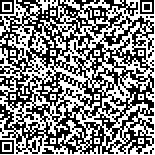下载中心
优秀审稿专家
优秀论文
相关链接
摘要

针对基于深度学习的分类模型在训练样本较少时所遭受的潜在过拟合问题,提出一种具备过拟合抑制的生成式对抗网络分类算法,并应用于高光谱图像分类。该算法在每次迭代时,首先,依据训练样本的标签信息使判别器网络拟合训练样本的数据分布;然后对训练样本的高维特征进行均值最小化,该过程会重新更新判别器网络参数,减小参数的值和方差,以抑制过拟合;最后,将本算法应用于针对高光谱图像所设计的光谱空间分类模型进行分类。实验结果表明,在标准数据集Indian Pines和Pavia University中随机选取1%标记样本进行训练,总体分类精度分别达到了89.61%和98.79%,相比于其他现有算法有明显的提高,较表现最好的分类方法,总体分类精度分别提升了5.17%和1.38%。在Indian Pines数据集取1%标记样本,Pavia University数据集取0.1%标记样本的情况下,本文算法对过拟合的抑制效果优于几种常用的过拟合抑制算法,较表现最好的Dropout算法,总体分类精度分别提升了5.60%和3.20%。
Deep learning has strong learning ability and has become a widely studied method in the hyperspectral image classification community. However, the deep learning-based classification model requires a large number of training samples to train a good model. Overfitting will occur when the training sample is small. The accuracy of the model on the test set is lower than the accuracy on the training set. Researchers have proposed overfitting suppression methods such as weight decay and dropout to suppress overfitting. However, these methods need to work in a specific environment and have limited suppression effect on overfitting. Thus, this study proposes an overfitting suppression algorithm based on generative adversarial networks to suppress the overfitting phenomenon of the model.First, a spatial neighborhood block for the standard dataset is constructed, and the dataset is divided into labeled, unlabeled, and test samples. Then, the labeled and unlabeled samples are sent to the generative adversarial networks for training. During input, the pixels in the neighborhood block are independently fed into the fully connected network discriminator to extract the spectral features of each pixel. Finally, the spectral features of each pixel are fused by the average pooling, and they connected to the output layer to obtain the classification result. The overfitting is caused by the large value and variance of the network parameters. Thus, the large parameter values enable the model to fit more samples. Therefore, the network is first fitted to the data by labeled samples in each iteration, and then, the optimizer is used to minimize the mean of the high-dimensional features. This process will re-update the network parameters, reduce the value and variance of the parameters, and thus suppress the overfitting.The algorithm was applied to two standard datasets, namely, Indian Pines and Pavia University datasets. The 1% labeled samples were randomly selected for training. The overall classification accuracy rates were 89.61% and 98.79%, which were better than those of several algorithms. Compared with several commonly used overfitting suppression methods such as batch normalization, L2 regularization, and dropout, the proposed overfitting suppression algorithm obtains 5.60% and 3.20% higher results on randomly selected 1% labeled samples from the Indian Pines dataset and randomly selected 0.1% labeled samples from Pavia University dataset.The model of generative adversarial networks designed for the characteristics of hyperspectral data can fully utilize the spectral and spatial features of hyperspectral images. The proposed overfitting suppression algorithm can significantly improve the classification performance of the model. However, the overfitting suppression effect of the algorithm is not obvious when the number of labeled samples is large. Thus, further research is needed.

